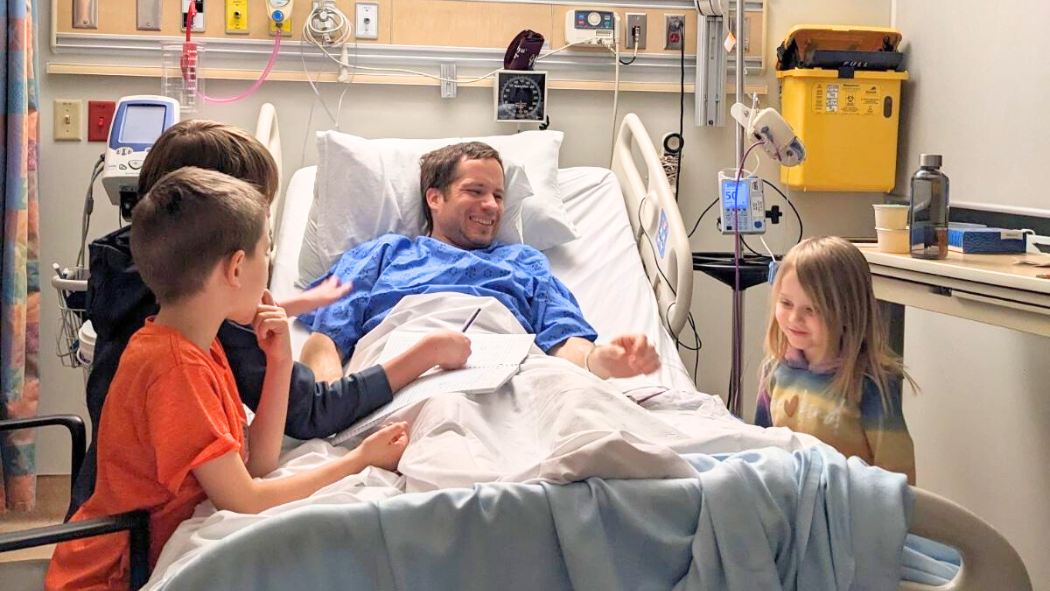
August 7, 2024
In late spring 2022, Chris Wyenberg was finishing his PhD when he noticed blood in his stool. His symptoms continued to worsen and in mid-August that year, he went to an urgent care clinic to be assessed.
“I didn’t think it was that serious, but I asked for a colonoscopy because a family member had recently been diagnosed with colorectal cancer,” Wyenberg explains.
Because of his family history, he was referred for a colonoscopy, where they found a small mass in his colon. After performing a biopsy on the mass, it was confirmed cancerous. That started Wyenberg on his treatment journey.
Wyenberg does not have a primary care provider, and after the physician who performed the colonoscopy found the mass, he was connected with the Oncology Patient Navigation Program (OPNP), which is operated by the South West Regional Cancer Program (SWRCP).
“I had no anxiety about the diagnosis and treatment process because I felt like everything was taken care of around me,” Wyenberg says.
About OPNP
OPNP is operated by SWRCP and helps patients navigate through the cancer system from pre-diagnosis, through treatment and, if necessary, the initial palliative care phase.
OPNP is available for patients in Ontario’s southwest region and the service can be accessed through London Health Sciences Centre (LHSC). There are four registered nurses who help navigate patients through the cancer care system, and there are four intake clerks who are the central hub for referrals. Conversations between patients and navigators happen completely over the phone.
Read more about OPNP on LHSC’s website.
“It felt like a family member advocating for me.”
Wyenberg felt supported by his patient navigator during his time connected to the program.
“I never met my patient navigator in person, but she was my first point of contact when I needed to be connected for my appointments as well as for other services such as counselling,” Wyenberg explains. “She was the most personable and empathetic person and she made it feel like a family member was advocating for me throughout the process.”
The patient navigator was professional and responsive and Wyenberg felt that things were being taken care of in the background without feeling like he needed to check in.
“When I needed a scan or other appointment, my patient navigator would search nearby areas to see if I could get an appointment sooner. And when I needed to make a big decision about a treatment option, she talked through it with me and guided me to make my own decision. She helped put things into perspective and made things less scary,” Wyenberg shares.
Throughout Wyenberg’s time connected with OPNP, he felt this service was excellent and important. “I feel like this program is essential – I would have felt on my own otherwise. There are some aspects to the healthcare system that seem natural to healthcare professionals but aren’t necessarily for patients. My cancer experience was made less stressful because of my patient navigator,” Wyenberg says.
A patient can be referred by a health care provider to OPNP through multiple avenues including from their primary care provider, through a visit to the Emergency Department or urgent care centre or other specialty services.